The cosmetics industry, A multi-trillion dollar global behemoth, thrives not only on innovative formulations and compelling marketing but significantly on the presentation and protection of its products. At the heart of this visual and functional appeal lies Cosmetic Packaging. More than just a container, cosmetic packaging serves as a crucial interface between the brand, the product, and the consumer. It’s the first tactile interaction, a silent salesperson, and a vital safeguard for the integrity and efficacy of the precious contents within. Understanding the multifaceted world of cosmetic packaging is not merely an aesthetic pursuit; it’s a deep dive into material science, design principles, regulatory compliance, and ultimately, the intricate processes required to bring these packaged products to market. One of the most fundamental and critical of these processes is the precise and efficient filling of packaging, a task that necessitates the use of specialized machinery: cosmetic filling machines.
The Essential Role of Cosmetic Packaging
Cosmetic packaging is far more than just a decorative shell. Its functions are numerous and critical to the success and safety of cosmetic products:
● Protection and Preservation: This is the primary function. Packaging protects cosmetics from external factors such as light, air, moisture, and microbial contamination, all of which can degrade the product, alter its texture, or render it unsafe. Airtight seals, opaque materials, and specific packaging designs are employed to extend shelf life and maintain product quality.
● Product Information and Branding: Packaging is the canvas for essential information, including ingredients, usage instructions, safety warnings, expiry dates, and regulatory compliance marks. It is also the primary medium for brand identity, conveying the product’s ethos, target audience, and perceived value through color, design, typography, and materials.
● Convenience and Dispensing: Effective packaging facilitates easy and precise dispensing of the product, minimizing waste and enhancing user experience. Pumps, droppers, sprays, tubes, and jars with specialized applicators are all designed for specific product consistencies and intended uses.
● Marketing and Consumer Appeal: In a crowded market, packaging plays a vital role in attracting consumer attention on retail shelves. Visually appealing and unique packaging can differentiate a product, evoke emotions, and influence purchasing decisions. The tactile experience of holding and opening a product is also a significant factor in consumer satisfaction.
● Sustainability and Environmental Responsibility: With increasing consumer and regulatory focus on environmental impact, sustainable cosmetic packaging has become a critical consideration. This includes using recycled materials, minimizing material usage, designing for recyclability, and exploring biodegradable or compostable options.
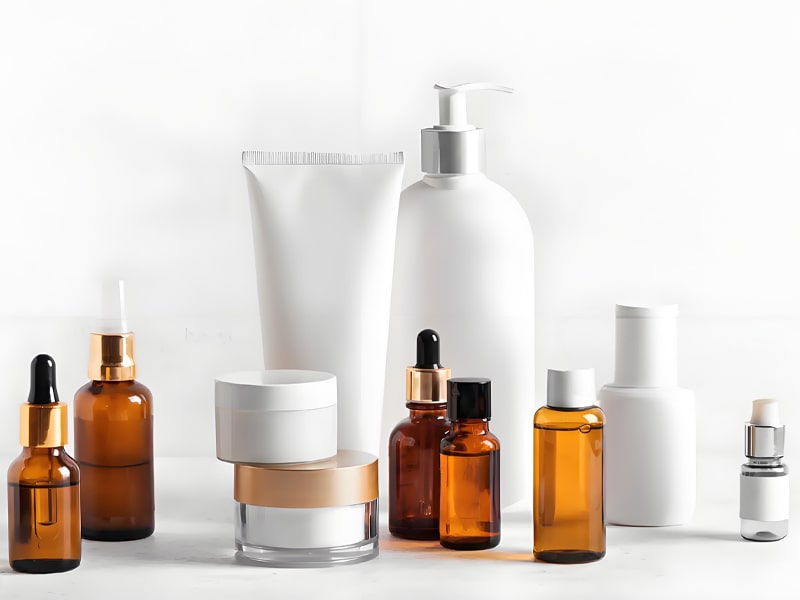
Diving Deeper: Types and Materials of Cosmetic Packaging
The diversity of cosmetic products – from thin liquids and viscous creams to powders and gels – necessitates a wide array of packaging types and materials. Understanding these variations is crucial for selecting the appropriate packaging that ensures product stability, user convenience, and brand aesthetics.
Common Types of Cosmetic Packaging:
● Bottles: Widely used for liquid and semi-liquid products such as lotions, toners, serums, and foundations. Bottles come in various shapes, sizes, and materials (glass, plastic), often paired with pumps, sprayers, or droppers for dispensing.

● Jars: Ideal for thicker formulations like creams, balms, masks, and gels. Jars offer easy access to the product and are available in glass and plastic, with screw-on or lift-off lids.
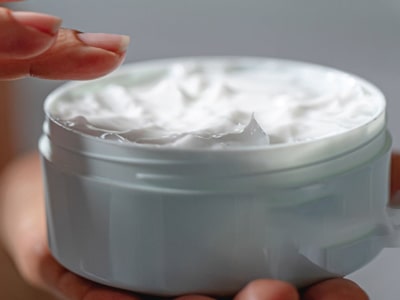
● Tubes: A popular choice for viscous products such as cleansers, moisturizers, and toothpaste (in a broader sense). Tubes are convenient for dispensing controlled amounts and are typically made from plastic or laminate.
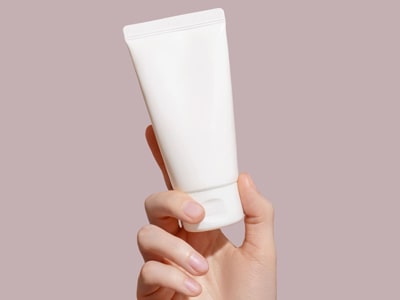
● Airless Packaging: An innovative solution designed to protect sensitive formulations from air exposure, preventing oxidation and preserving product efficacy. Airless pumps utilize a vacuum mechanism to dispense the product, eliminating the need for a dip tube. This is particularly beneficial for natural or preservative-free products.

● Sprayers and Misters: Essential for liquid products like perfumes, body mists, and setting sprays, providing a fine and even application.
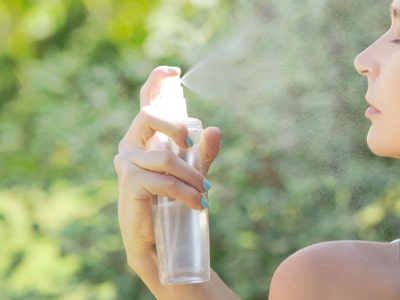
● Droppers: Commonly used for serums and oils, allowing for precise dosage and targeted application.
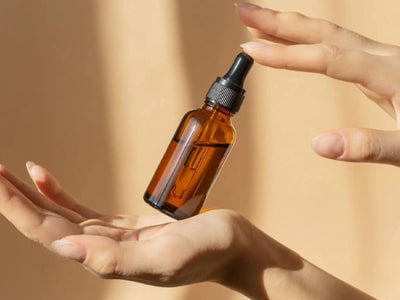
● Compact Cases: Designed for solid or pressed powder products like eyeshadows, blushes, and foundations, often including mirrors and applicators.

● Pouches and Sachets: Single-use packaging for samples or travel-sized products, offering portability and reduced material usage.
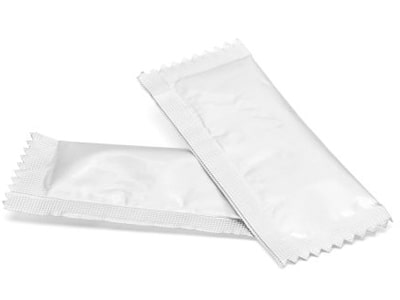
Materials Used in Cosmetic Packaging:
The choice of material significantly impacts the packaging’s performance, cost, and environmental footprint. Common materials include:
● Plastic: The most prevalent material in cosmetic packaging due to its versatility, cost-effectiveness, and durability. Common types include PET (Polyethylene Terephthalate), HDPE (High-Density Polyethylene), PP (Polypropylene), and PVC (Polyvinyl Chloride). However, the environmental concerns associated with plastic waste are driving innovation in recycled and biodegradable plastics.
● Glass: Offers an elegant and premium feel, excellent barrier properties against air and moisture, and is widely recyclable. However, glass is heavier, more fragile, and can be more expensive than plastic. It is often used for fragrances, serums, and high-end creams.
● Metal: Used for components like closures, caps, and sometimes for the primary packaging of products like aerosols or certain creams in tubes. Metal provides excellent barrier properties and a sense of luxury.
● Paper and Cardboard: Primarily used for secondary packaging, such as boxes, cartons, and inserts. Paper-based materials are often recyclable and offer a large surface area for branding and information.
● Sustainable and Alternative Materials: The industry is actively exploring and adopting sustainable materials, including post-consumer recycled (PCR) plastic, bio-based plastics derived from renewable resources, bamboo, wood, and innovative biodegradable materials.
The Bridge to Production: The Crucial Role of Cosmetic Filling Machines
Once the intricate details of cosmetic packaging design and material selection are finalized, the practical challenge of filling these containers efficiently and accurately arises. This is where specialized machinery, namely Cosmetic Filling Machines, become indispensable. The transition from an empty container to a saleable, packaged product relies heavily on the capabilities and precision of these machines.
Cosmetic products, with their diverse viscosities, textures, and sensitivities, require filling equipment that can handle these variations without compromising product integrity or causing waste. A filling machine designed for thin liquids will not be suitable for a thick cream, and a machine intended for powders will not work for gels. Therefore, the type of filling machine employed is directly dictated by the product formulation and the chosen packaging format.
Types of Cosmetic Filling Machines and Their Applications:
Cosmetic filling machines are broadly categorized based on the filling principle they employ, which is determined by the product’s characteristics:
● Liquid Filling Machines: Designed for low-viscosity products like toners, serums, and liquid foundations. Common types include:
● Gravity Fillers: Rely on gravity to fill containers, suitable for free-flowing liquids.
● Peristaltic Pump Fillers: Ideal for filling small volumes with high accuracy and preventing contamination, often used for sensitive serums or fragrances.
● Piston Fillers: Suitable for a wider range of liquids, including slightly thicker ones, using a piston to draw and dispense a precise volume.
● Viscous Liquid and Cream Filling Machines: Specifically engineered to handle thicker products like creams, lotions, and gels. These often utilize:
● Piston Fillers: Modified to handle higher viscosities.
● Pump Fillers: Employing specialized pumps to move and dispense thick materials.
● Auger Fillers: Used for powders and granular products, but also sometimes adapted for very thick or paste-like substances.
● Powder Filling Machines: Designed for dry, granular, or powdered cosmetics like eyeshadows, blushes, and setting powders. Auger fillers are commonly used for their ability to handle powders with varying flow characteristics.
● Tube Filling Machines: Specialized machines for filling and sealing tubes, used for products like cleansers, moisturizers, and hand creams. These machines can automatically orient, fill, and seal plastic, laminate, or metal tubes.
● Bottling Lines: Integrated systems that handle the entire bottling process, including unscrambling bottles, filling, capping, labeling, and packaging into cartons.
● Jar Filling Lines: Similar to bottling lines, but specifically designed for jars, including lid placement and sealing.
 |
| Double servo ceramic pump filling, plugging, capping and capping machine |
Key Considerations for Cosmetic Filling Machines:
Selecting the right cosmetic filling machine involves considering several critical factors:
● Product Characteristics: Viscosity, density, temperature sensitivity, and the presence of particles all influence the choice of filling technology.
● Packaging Type and Size: The machine must be compatible with the specific bottles, jars, tubes, or other containers being used, including their dimensions and closure types.
● Filling Accuracy and Precision: Maintaining consistent fill volumes is crucial for product consistency, regulatory compliance, and minimizing product giveaway.
● Production Speed and Throughput: The machine’s capacity must align with the desired production volume.
● Cleanliness and Sanitation: Cosmetic filling machines must be designed for easy cleaning and sanitation to prevent cross-contamination and maintain product hygiene. Materials used in contact with the product should be food-grade or pharmaceutical-grade stainless steel.
● Changeover Efficiency: For manufacturers producing a variety of products in different packaging, quick and easy changeover between products and packaging formats is essential for maximizing efficiency.
● Regulatory Compliance: Machines must meet relevant industry standards and regulations for safety and hygiene.
● Automation Level: From semi-automatic benchtop fillers to fully automated high-speed lines, the level of automation depends on production volume and desired efficiency.
The Interplay of Packaging Design and Filling Process
It’s crucial to recognize that the design of cosmetic packaging is not independent of the filling process. In fact, there’s a symbiotic relationship between the two. Packaging features like the size and shape of the opening, the material’s rigidity, and the presence of internal structures can significantly impact how efficiently and effectively a product can be filled.
For example, a bottle with a narrow neck may require a specific type of nozzle on the filling machine to prevent spillage. Airless packaging requires specialized filling techniques that prevent air from being trapped within the container. Tubes require machinery that can accurately fill and seal the bottom of the tube.
Therefore, effective collaboration between packaging designers and manufacturing engineers responsible for the filling process is essential during the product development phase. Designing packaging that is both aesthetically appealing and practical for high-speed automated filling is key to optimizing production efficiency and minimizing costs.
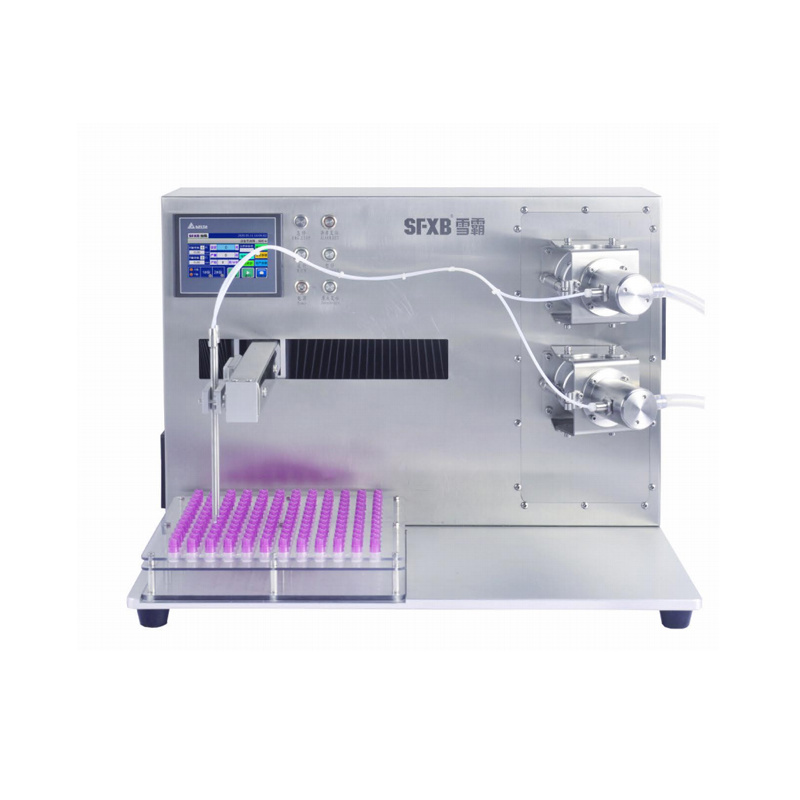 |
| Matrix High Precision Valveless Ceramic Pump Filling Machine |
The Future of Cosmetic Packaging and Filling
The cosmetic packaging and filling landscape is continuously evolving, driven by technological advancements, changing consumer demands, and increasing emphasis on sustainability.
● Smart Packaging: Integration of technologies like NFC tags, QR codes, and augmented reality offers opportunities for enhanced consumer engagement, product traceability, and personalized experiences.
● Sustainable Filling Solutions: Development of filling machines that can handle new sustainable packaging materials, minimize product waste during filling, and reduce energy consumption.
● Increased Automation and Robotics: Further automation of filling and packaging lines is leading to higher speeds, increased precision, and reduced labor costs.
● Personalization and Customization: The rise of personalized cosmetic products is creating a need for flexible filling solutions that can handle smaller batch sizes and customized formulations.
Conclusion: The Unseen Machinery Behind the Beauty
Cosmetic Packaging is the tangible embodiment of a brand’s promise and the protective shell of precious formulations. Its design and material selection are a blend of art, science, and regulatory compliance. However, bringing these beautifully designed packages to life with the actual product inside is a sophisticated manufacturing process that relies heavily on specialized machinery.
Cosmetic Filling Machines are the unsung heroes of the beauty industry, ensuring that each bottle, jar, or tube is filled accurately, hygienically, and efficiently. The right filling machine, carefully selected based on the product’s characteristics and the packaging’s requirements, is fundamental to maintaining product quality, meeting production demands, and ultimately, delivering a safe and satisfying experience to the end consumer. As the cosmetic industry continues to innovate in both formulations and packaging, the evolution of filling technology will undoubtedly play a crucial role in shaping the future of beauty.
| References: | |
| 1. | Trends in Cosmetic Packaging: A Review Retrieved from: 《International Research Journal of Pharmacy》 |
| 2. | Cosmetics Europe – General Approach for Cosmetic Packaging |
| 3. | ISO 22715:2006 – Cosmetics — Packaging and Labelling |
| 4. | The New Generation of Cosmetics Packaging: A Paradigm Shift |


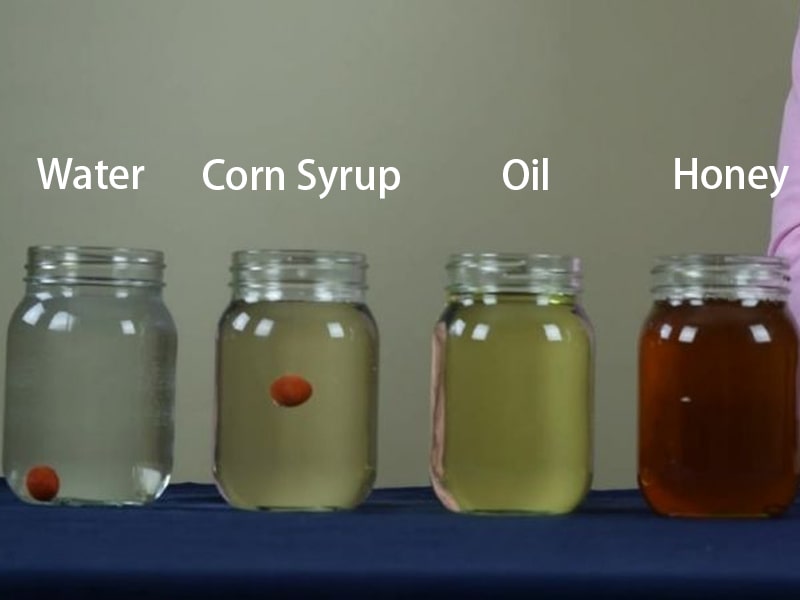
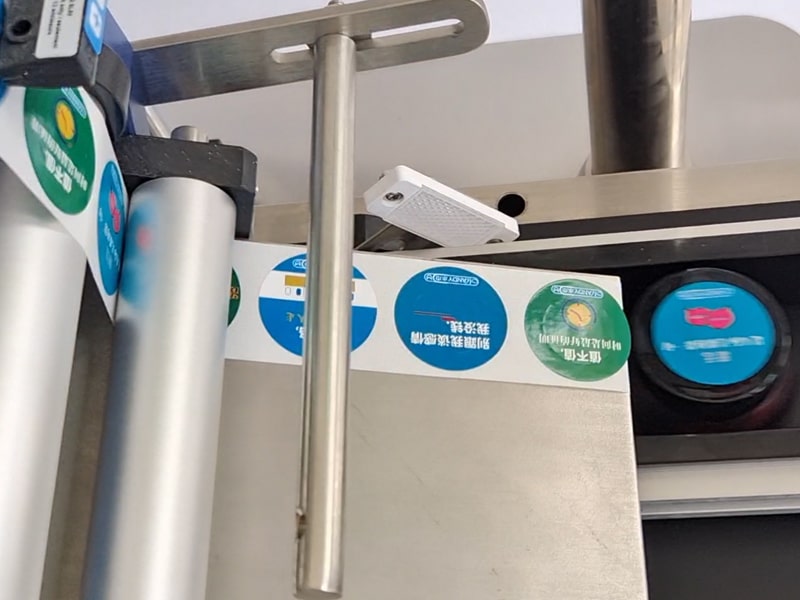
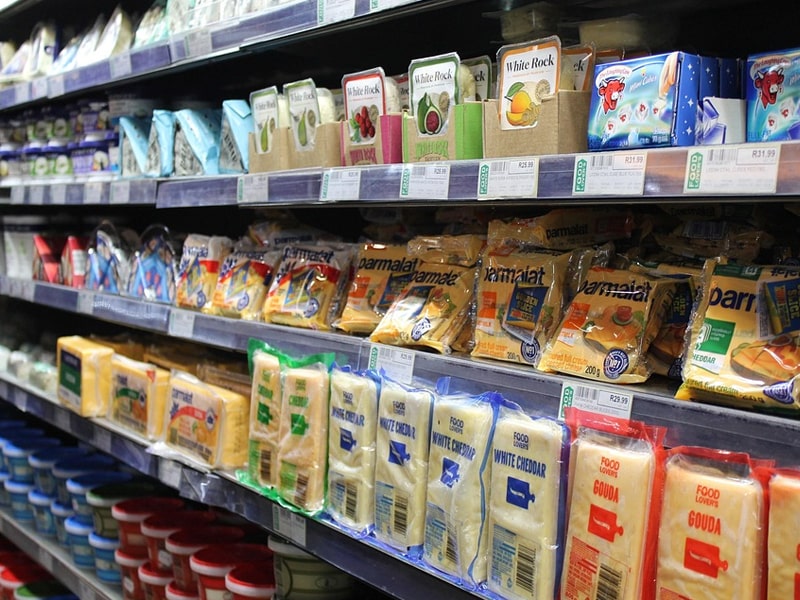

Comments